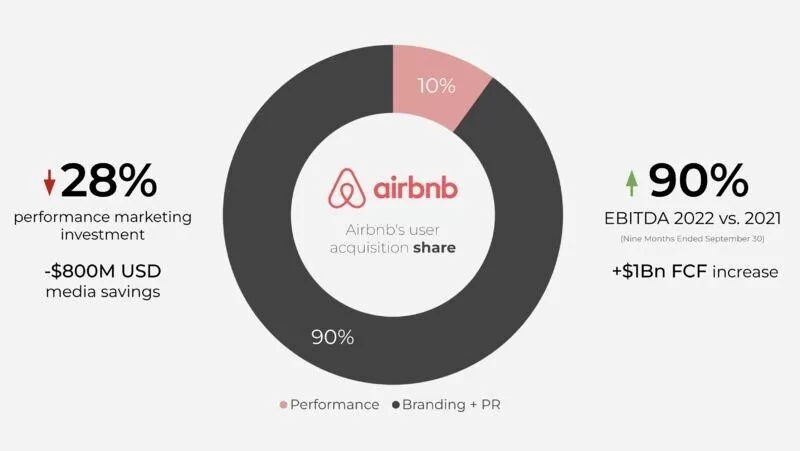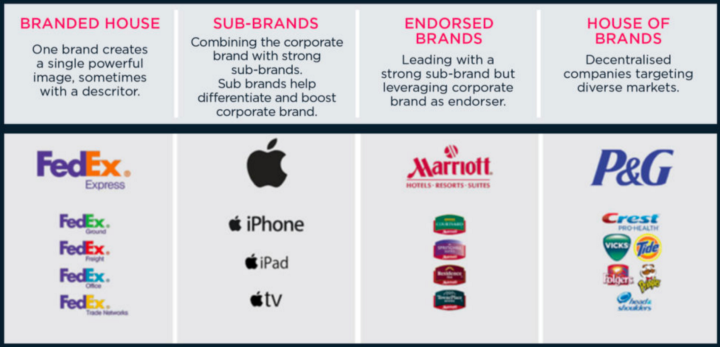
When we talk about Branding, we usually think about brands like Coca-Cola and Nike. We can define them simply and quickly, in addition to associating their main attributes. Disney means magic. Volvo means safety.
Branding is the strategy of signifying a business through a brand, making it known, considered and preferred. Companies that have strong and loved brands rely on organic traffic, which is why they have healthy CAC (Customer Acquisition Cost) and rely little on Performance Marketing. They are capable of attracting professionals and retaining them effectively, given the impact they generate. They rely on spontaneous media given their relevance. They can connect with people. They have recurrence. Some are even synonymous with the category. 10/10.
Building a brand has never been more important
Check out the priorities of Marketing leaders from almost 2 thousand companies responding to Nielsen’s Global annual marketing report 2022 below. First of all, brand awareness is important.
See the advantages that investing in brand building brought to AirBnb: less than 10% of its traffic depends on paid search, according to CFO David Stephenson.

What does this have to do with products?
Brand architecture is a system that organizes the solutions offered by companies. It aims to generate synergy, consistency and optimize communication efforts, based on minimum standards. See below how the different hierarchical models behave: the first three take advantage of the strength of the mother brand, as its equity (value) spills over into the products and services it delivers. The last case is the exception, in which the brands are independent of each other and are below the holding company, which generally appears less to the end consumer.

It turns out that, regardless of the chosen architecture, some companies strive to build their own reputation for their products, making them as (or more) recognizable as parent brands. One of the main gains of this strategy is segmentation: the product brand can work on messages aimed at specific audiences, while the broader corporate brand maintains its umbrella positioning. Watch:
– It is not an Amazon digital assistant. It’s Alexa.
– It’s not Nestlé coffee. It’s Nespresso.
– Not Adobe editing software. It’s Photoshop.

The product brands above are iconic and certainly have dedicated Marketing management, as well as a considerable budget. But often, small actions, like defining an interesting name, can generate gains. For example: I have a JBL headphone called Tune215BT. Every day I connect it via Bluetooth to my cell phone and think: what a lost opportunity for product branding. If someone asks me for a phone tip, the chances of me recommending it are low, despite it being great; AirPods would certainly have the advantage.
The real question is not whether product branding is worth the investment, but rather, when and how much to invest in product branding. Traditionally, global mega companies invest heavily in their brands. Startups spend much less. This is because they are generally born with a hero product, which is validated in a controlled environment and then scaled. While the company is synonymous with its product, there is little doubt: the recommendation is not to sophisticate something that should be simple.
As the company matures, new solutions and business models emerge, including possible acquisitions of other players. The brand, which was previously small and little known, is gaining visibility and value. The element of risk arises, as technology companies have testing methodology that can be perceived as instability. Hard sell initiatives, previously harmless, can damage the brand’s image. At the same time, the brand may not be elastic enough to embrace a new portfolio of products beyond the core without causing surprise to the customer. It also needs to build itself as an employer brand, embracing important aspects such as diversity, in addition to continuing to convey solidity to the investing public. Ufa!
In this context, it is worth considering the “detachment” of the product brand(s) from the corporate brand. There is no recommended architecture for each segment, industry or type of business. For example, Porto Seguro is a branded house, Google-Alphabet is a hybrid, Globo is a house of brands. It is not a trivial or obvious process and must be carried out by people experienced in the subject. It is necessary to consider market aspects, company circumstances and the long-term vision, so that the brand strategy contributes to achieving the plan.
If you are working to “stretch” your product, ask yourself:
1. What is the value proposition of my product?
2. Do I intend to change your core or maintain it by offering additional services?
3. Who does my product serve and why?
4. What other audience could I offer it to without causing disruption or discomfort? Who could I not offer it to at all? (antagonistic or competitors)
5. Do these audiences relate to each other? As?
6. How do people perceive the product today?
7. How do I want people to perceive the product from now on?
8. Can the current name/brand of this product support other solutions?
These answers will be critical information that can help you make decisions about possible paths for your product brand, bringing understanding about its limits.
Product positioning is different from brand positioning
Whether it’s your own brand, sub-brand, derivative or a simple descriptive name, it doesn’t matter: all products must be positioned. In product positioning, competitive alternatives, exclusive attributes and the benefits that the solution brings to the market are considered. It is an exercise derived from the value proposition and from it the communication guide is developed, whose objective is to guarantee consistency of discourse. It is based on the user’s pain, the solution and the business.
Brand positioning considers its purpose, personality and territories. It gives rise to the brand’s usage guide, with tone of voice, visual identity and general application guidelines. As a rule, in the first three cases of brand architecture it is not necessary to carry out dense and detailed brand positioning work (since they draw from the mother brand), but it is highly recommended in the case of house of brands.
Both positioning works want to project an image in people’s heads, from different angles: the first more pragmatic, the second more emotional. These are complementary objectives that, together, contribute to the holistic construction of a solution for the target audience. Products that can do this, in fact, differentiate themselves.
In short, it is a fact that a strong brand generates more business. At the same time, it may seem that Product Branding is a strategy to be applied only by large companies. But Branding will not always require the development of complex ecosystems, extensive platforms and costly campaigns. Investing in Product Branding means striving to make your product memorable, and this can be done in a way that corresponds to the resources available. Often, a simple and creative look can go a long way in connecting your product even more to the target audience.
*Fernanda Sujto is PMM at Hotmart
Source: https://www.mundodomarketing.com.br/tudo-sobre-product-branding/


